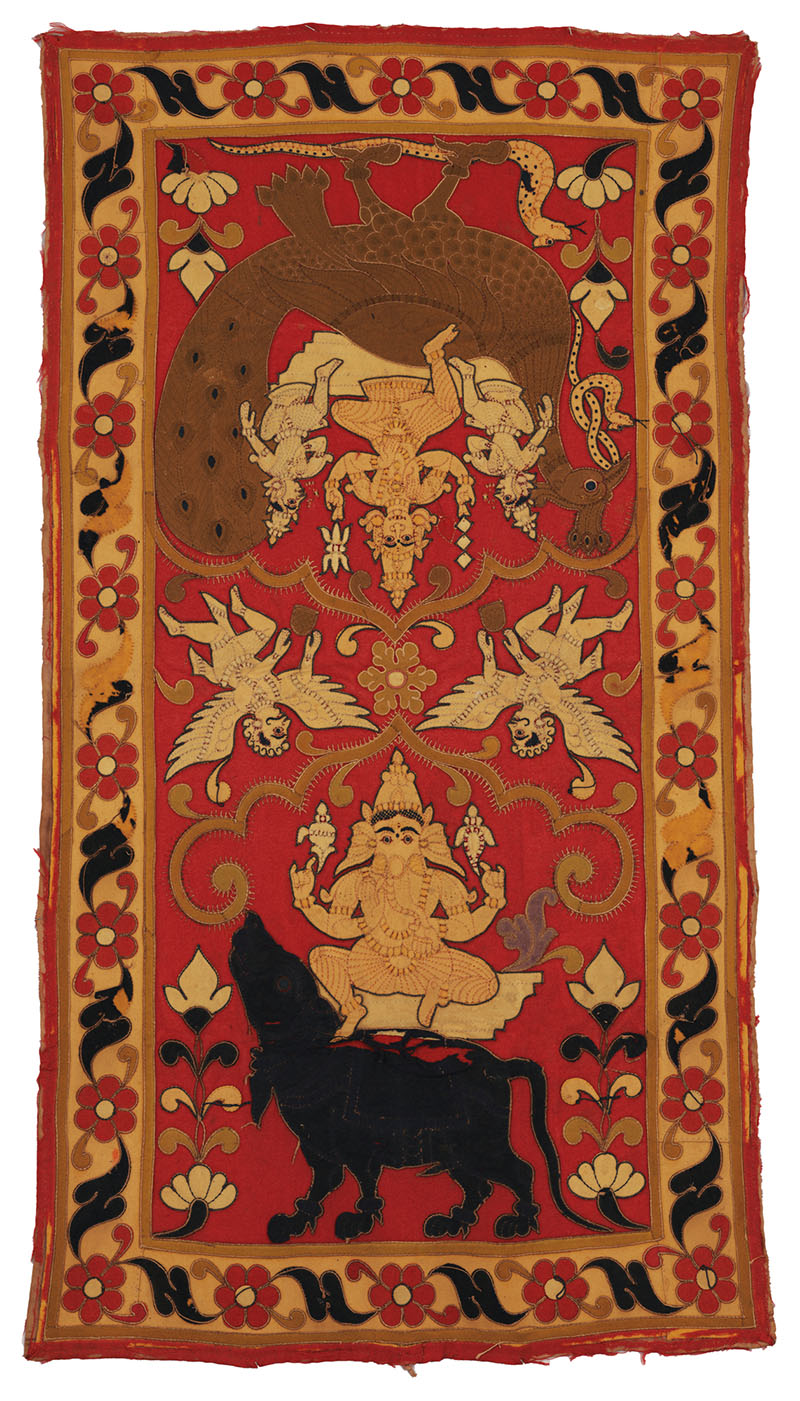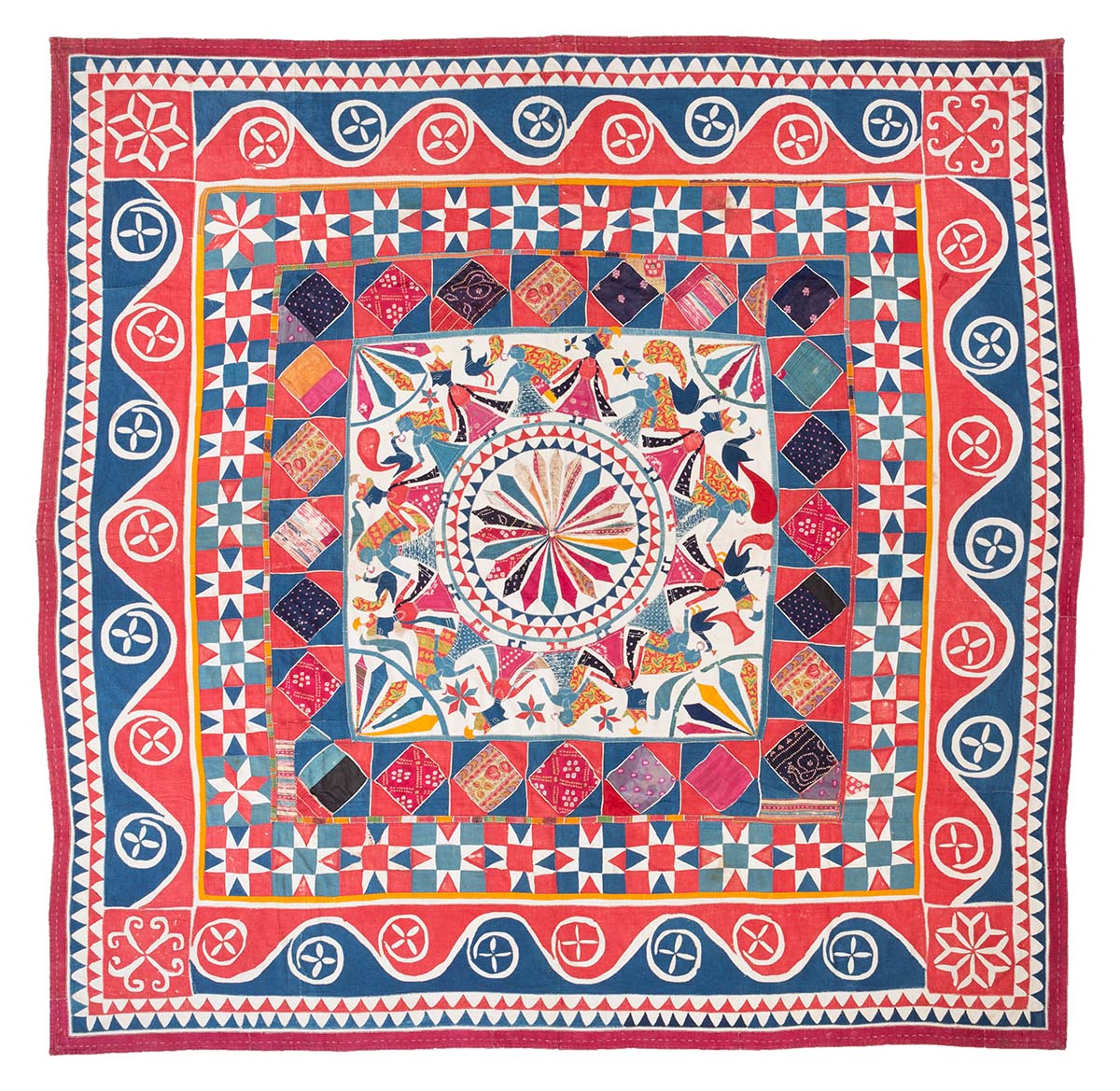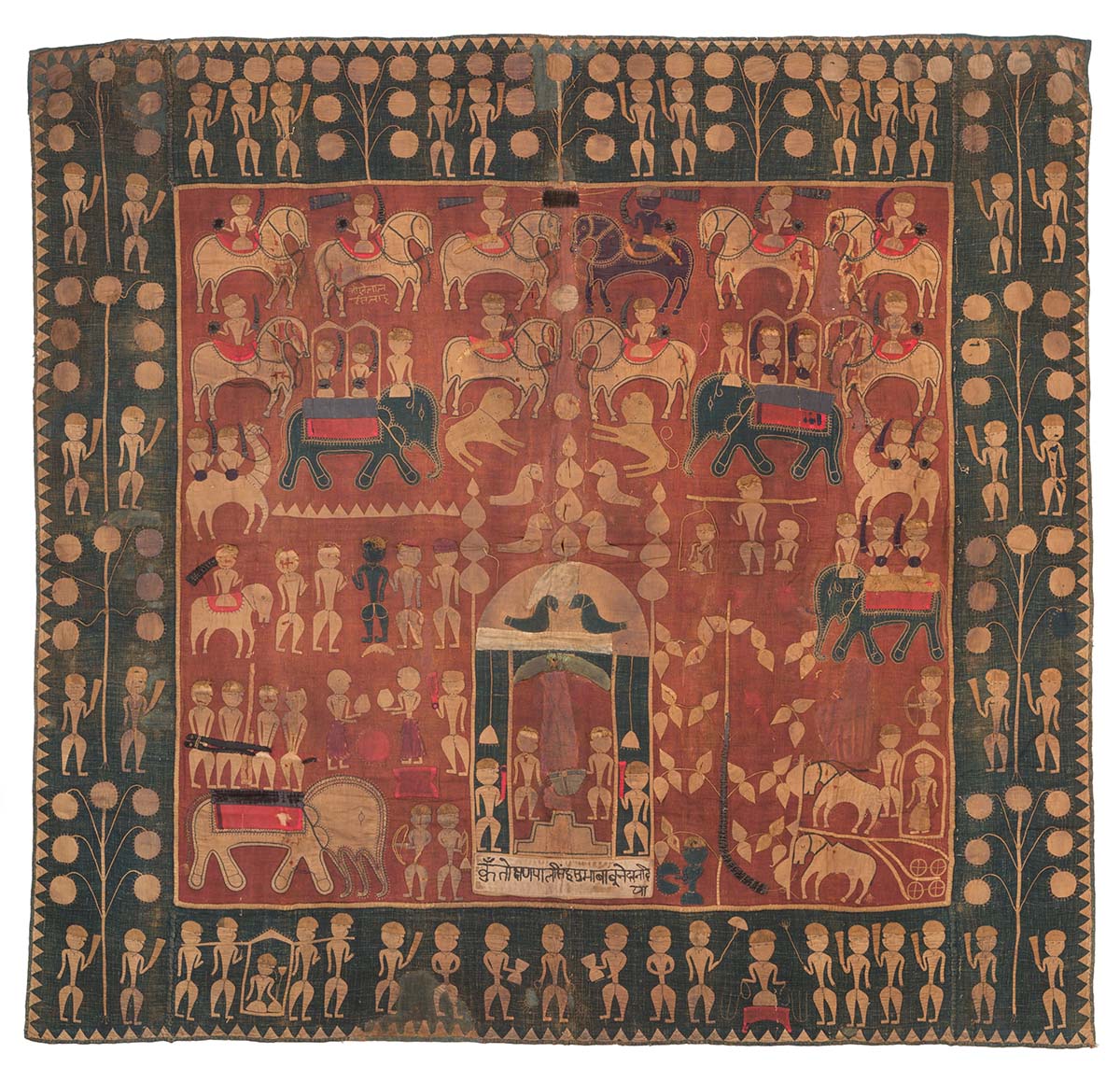ARTICLE
Appliqué
There are two variations of the applique technique. In one, the overlying cloth may be cut into the desired shape and then stitched onto the base fabric to create patterns; while in the other, sometimes known as reverse appliqué, incisions are made in the layer of overlying fabric, revealing the base fabric to make patterns. Piping and embroidery may also be employed to lend detail or create outlines.
The functions of appliqué textiles have evolved over time, often due to shifts in patronage. Most varieties do not attract specialised demand from outside their local economy and are often marketed nationally and internationally as generic “appliqué” products, rather than as regionally-specific products. Furthermore, these handmade goods are typically expensive because of the elaborate nature of the craft, and therefore face strong competition from cheaper, mass-produced textiles. Although artisans still receive commissions for traditional appliqué work today, the technique is now largely used for adorning clothing and household textiles such as curtains, cushion covers and tablecloths.
Bibliography
Our website is currently undergoing maintenance and re-design, due to which we have had to take down some of our bibliographies. While these will be re-published shortly, you can request references for specific articles by writing to hellomapacademy@map-india.org.









